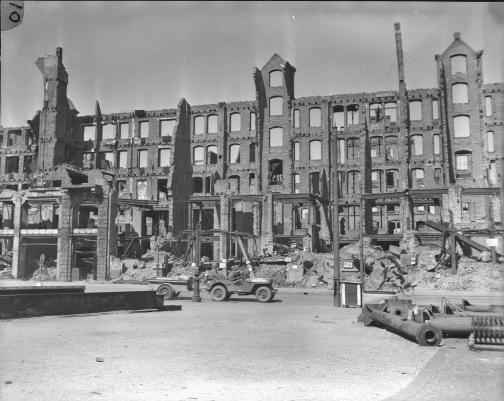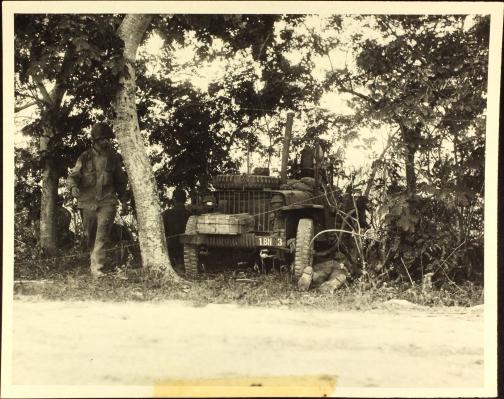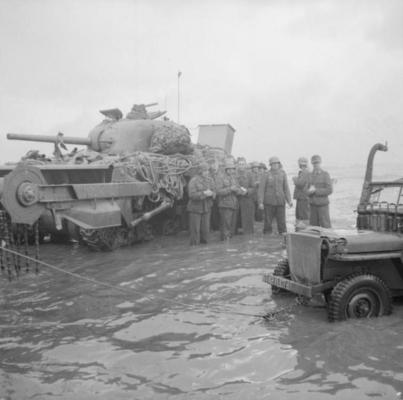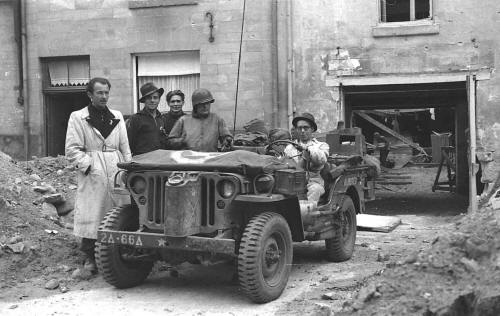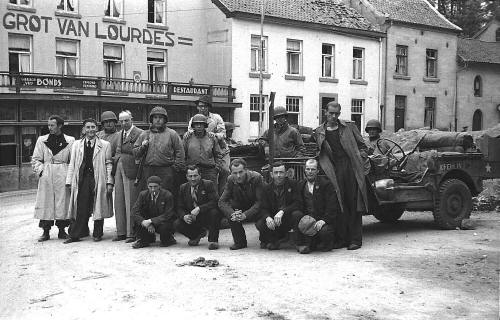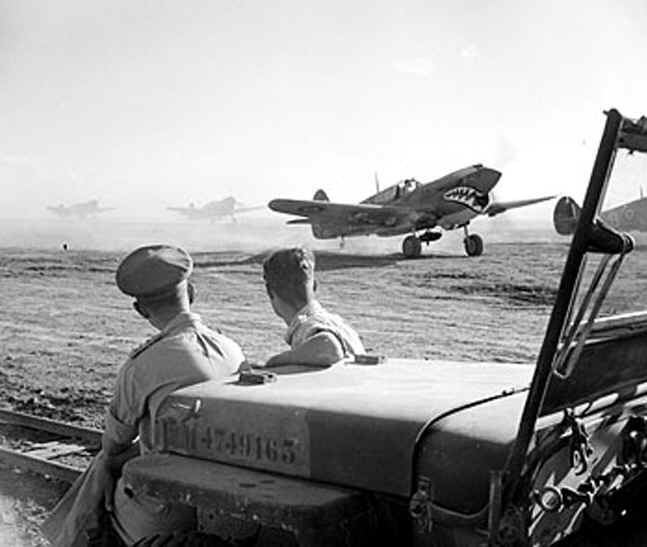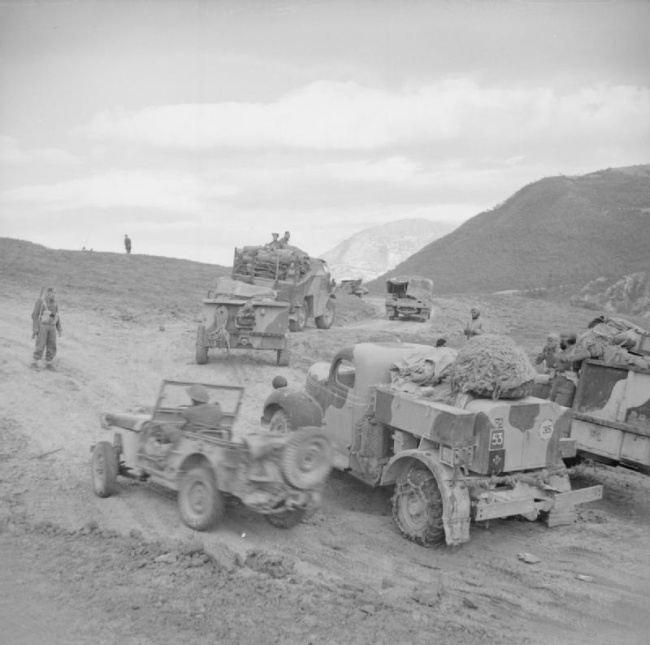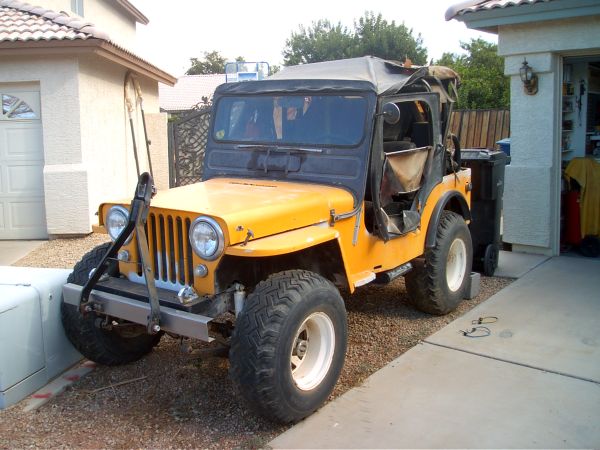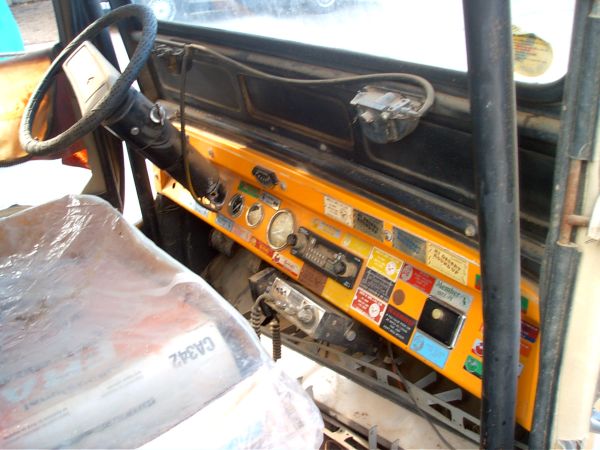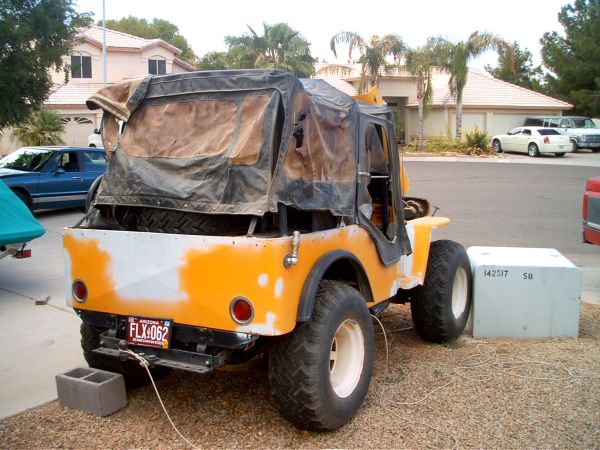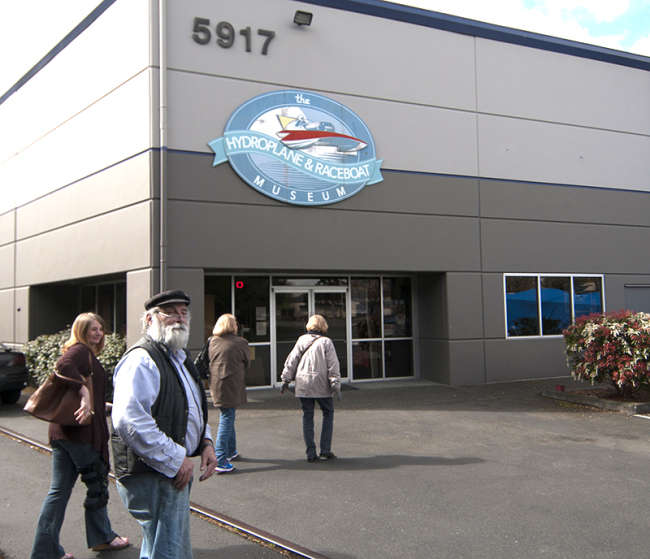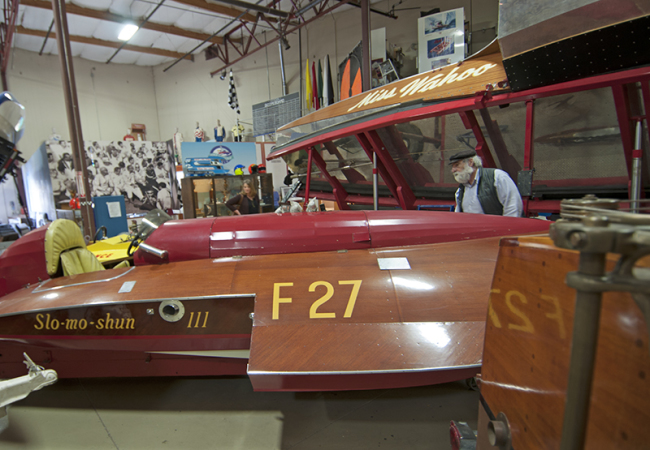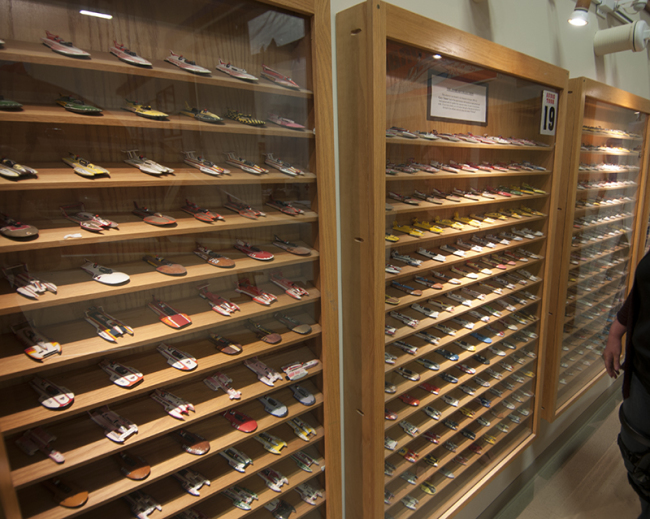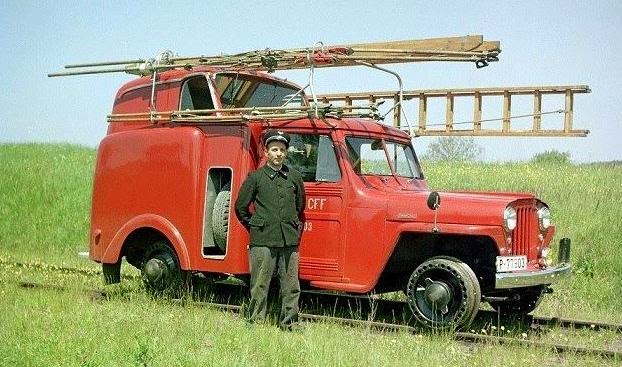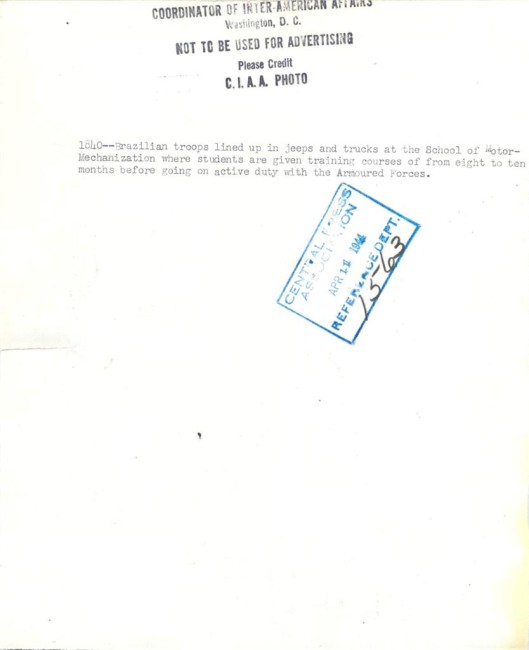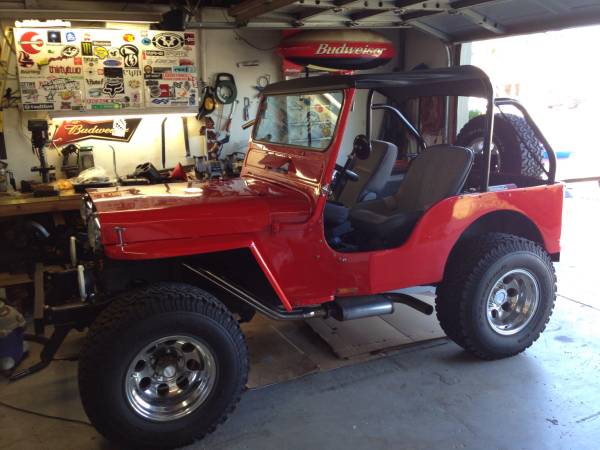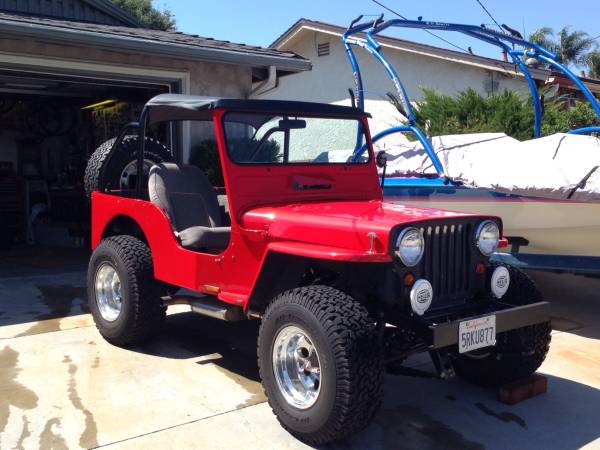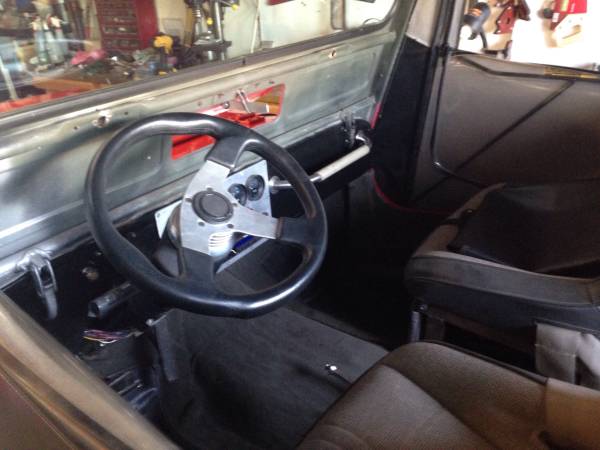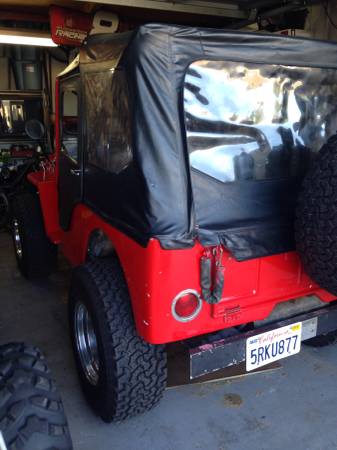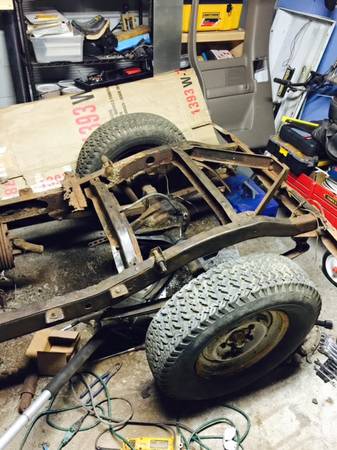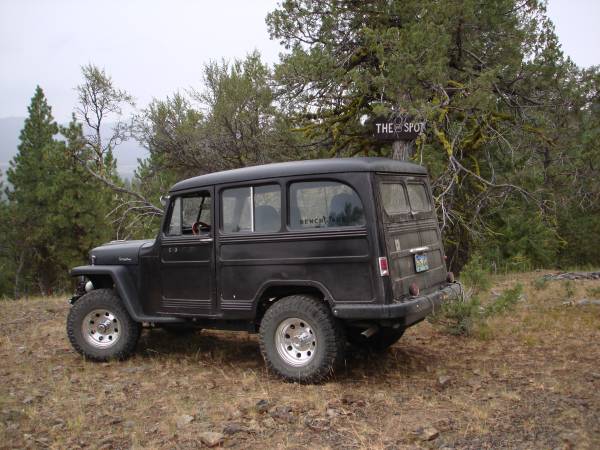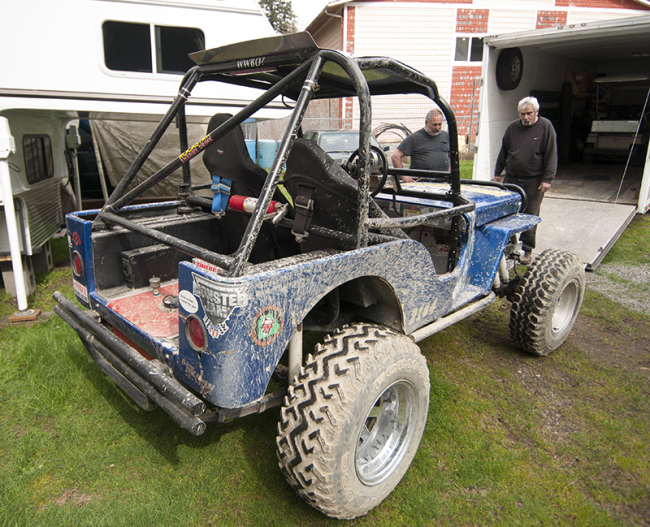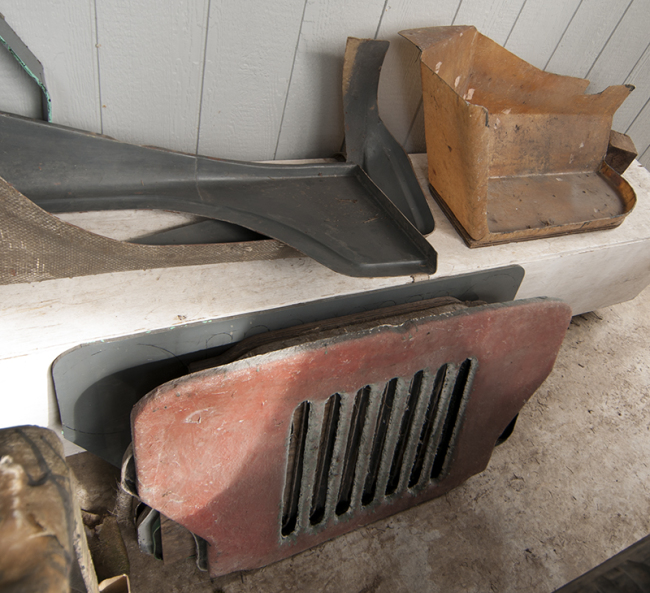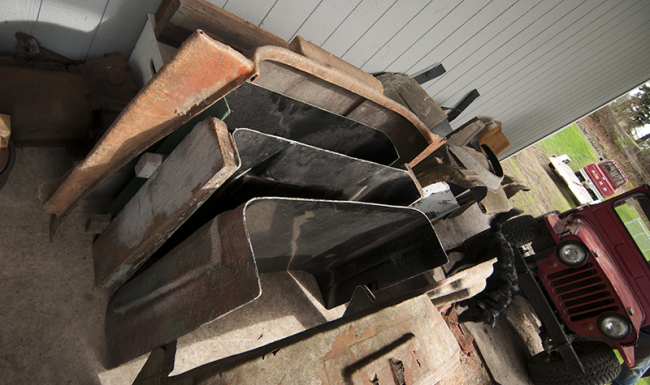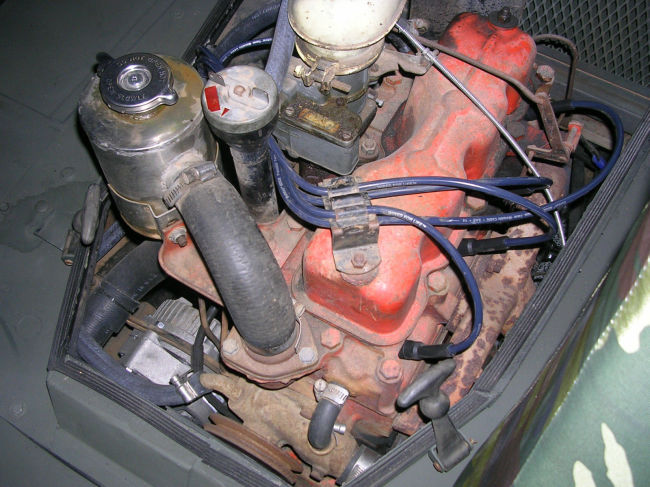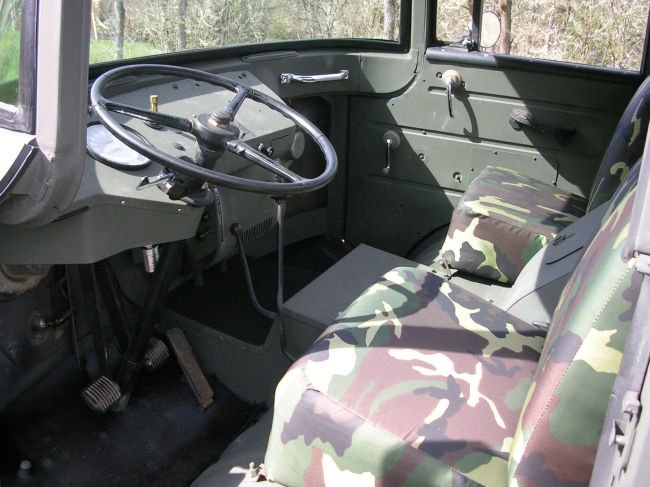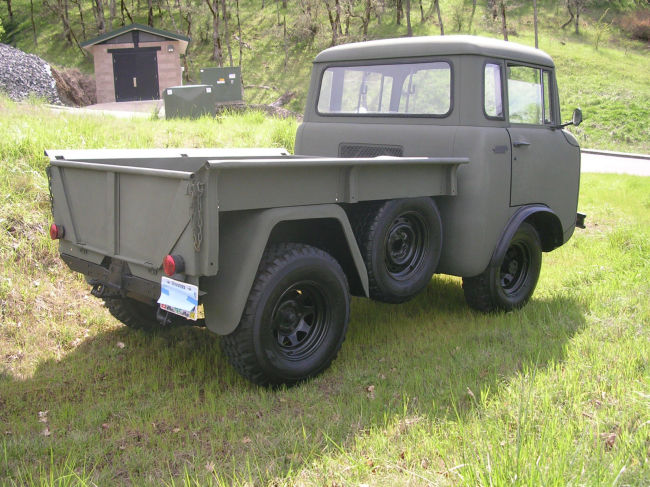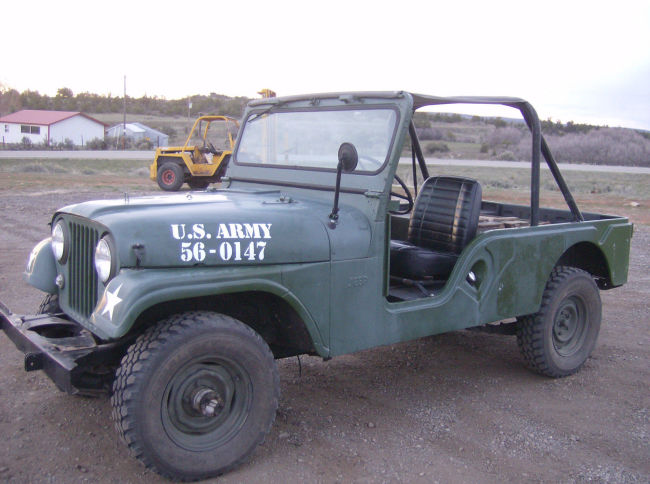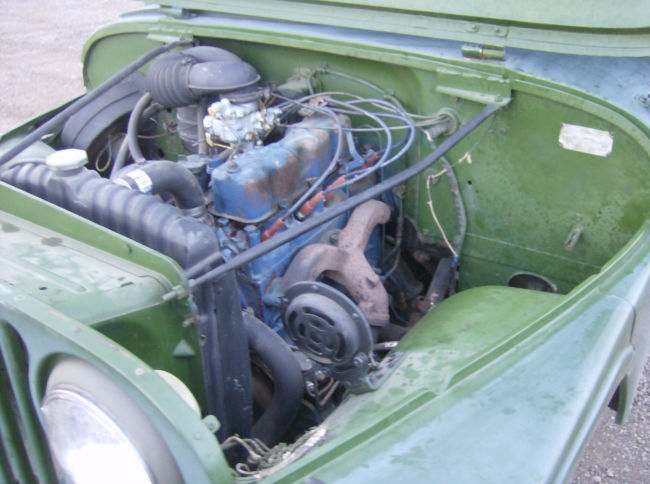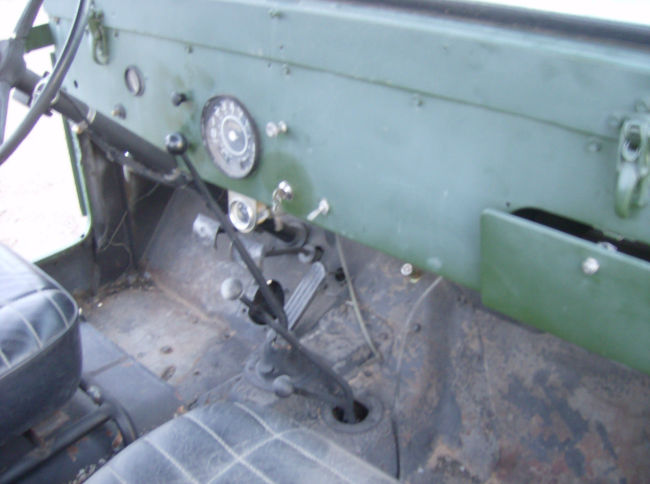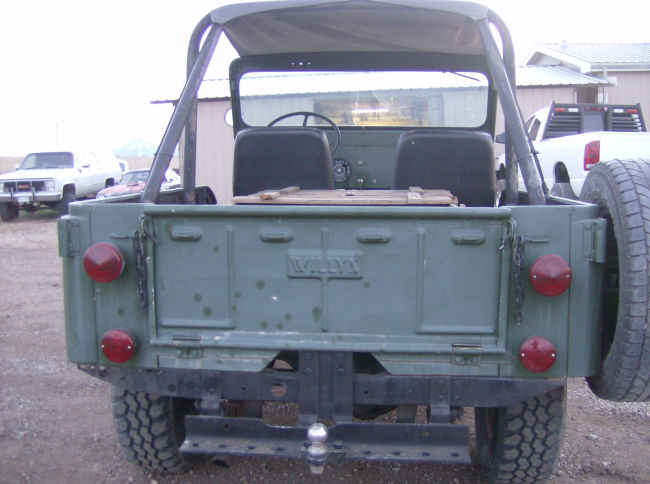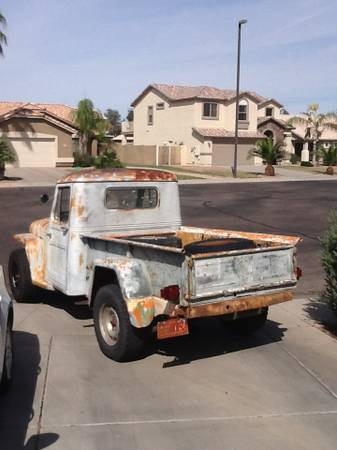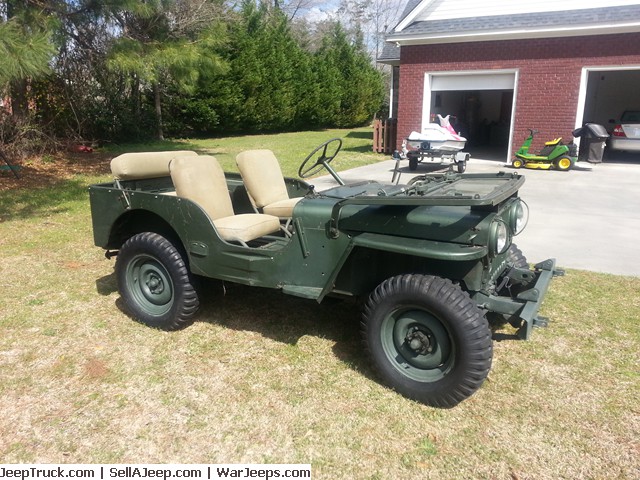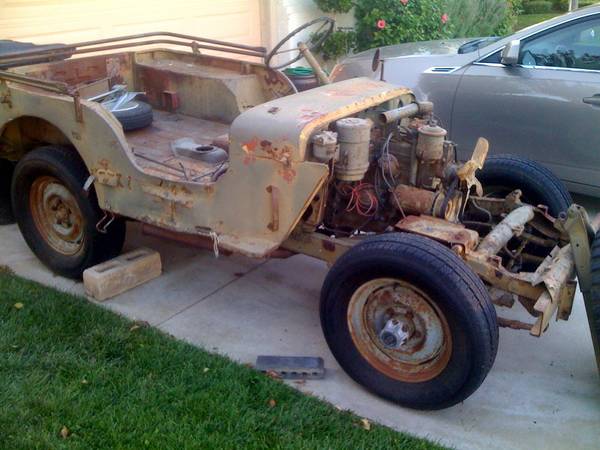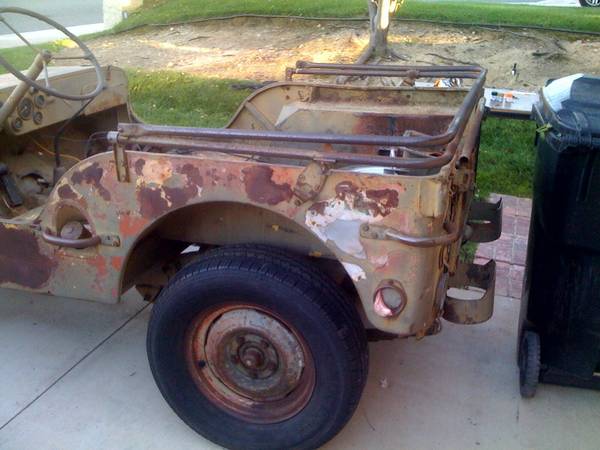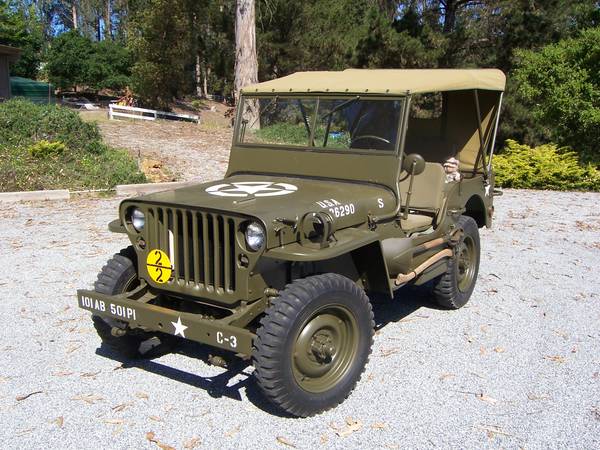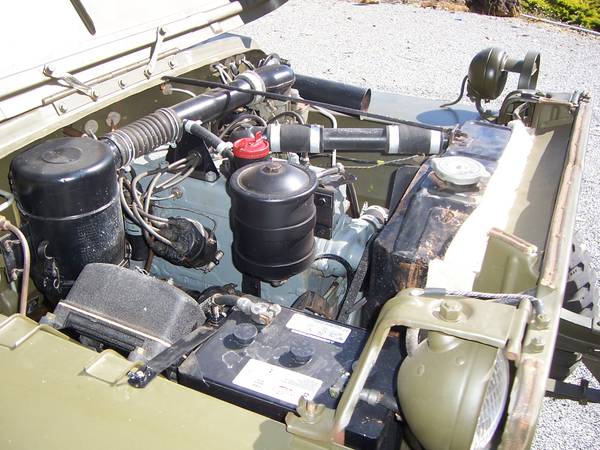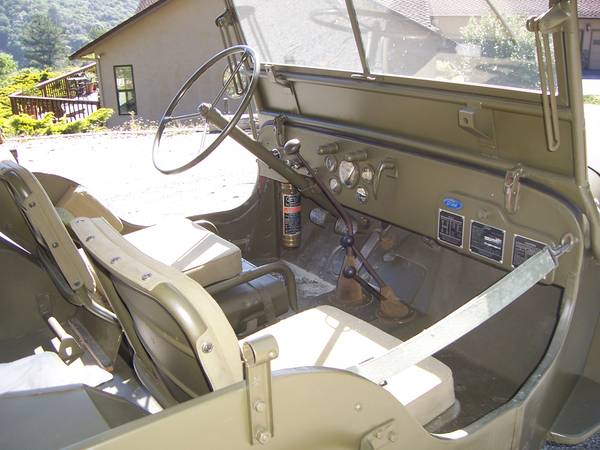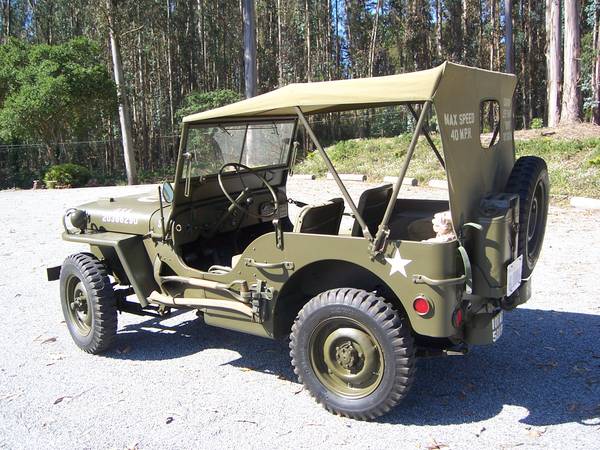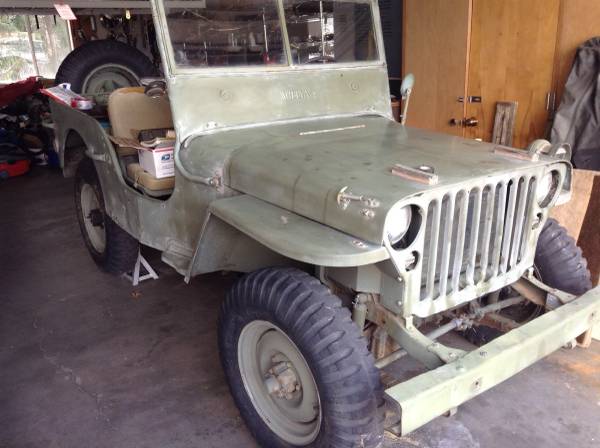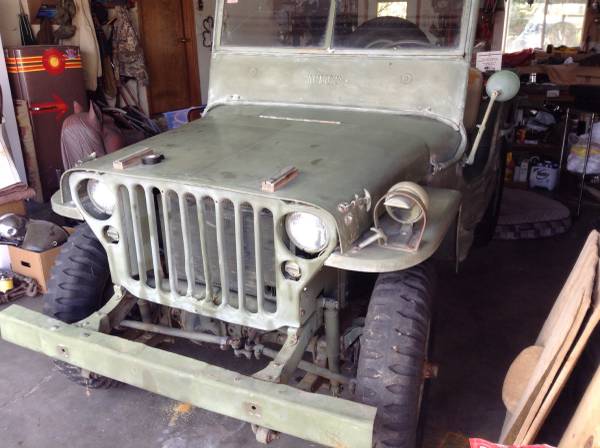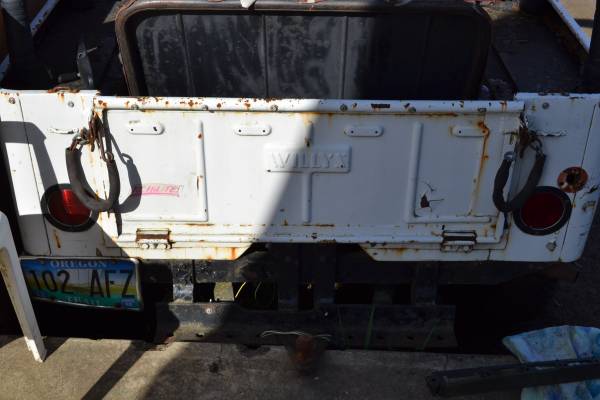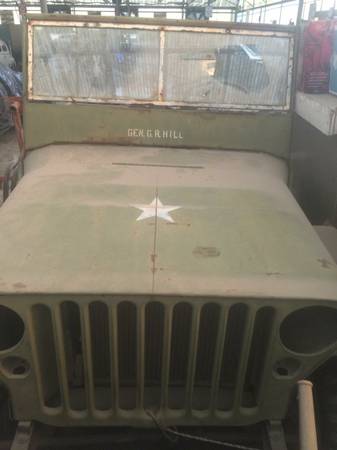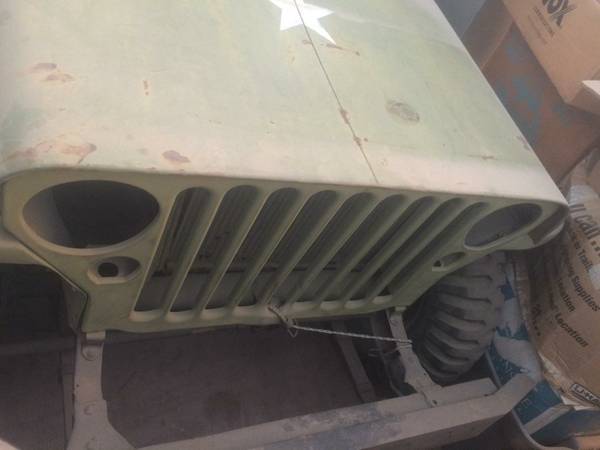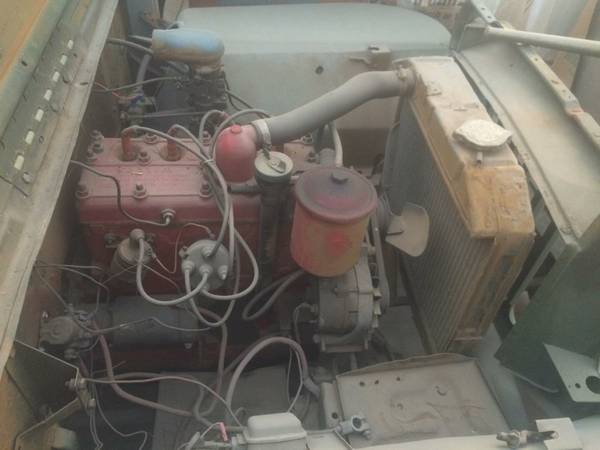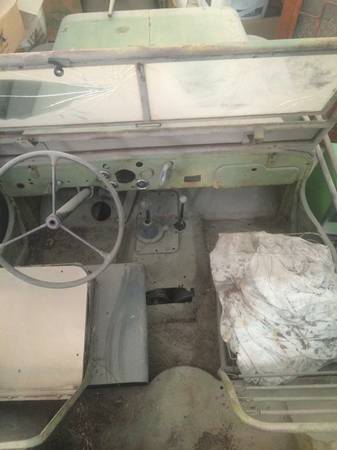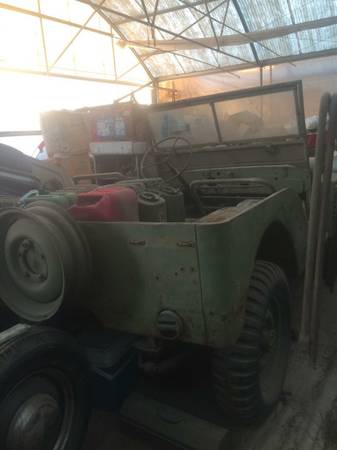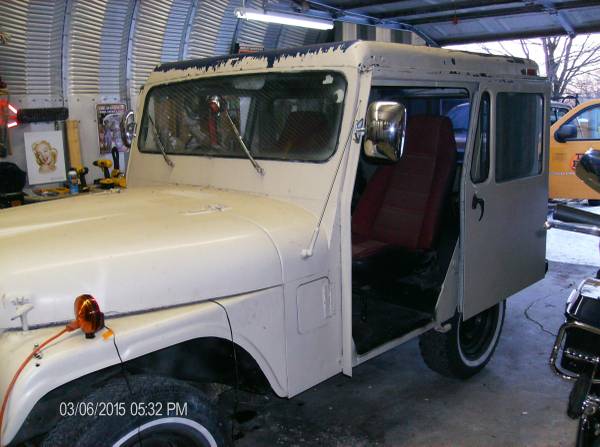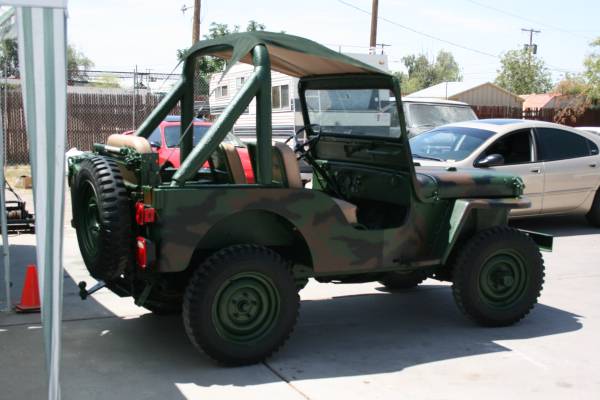Charles forwarded a variety of jeep images.
1944 Article about Navy Jeep at Haskel University
A February 9, 1944, issue of the Lawrence Journal-World featured a story about a US Navy jeep rides used to raise money for the purchase of jeeps for the military.
1949 CJ-3A Gilbert, AZ **SOLD**
UPDATE: **SOLD** Was $5500
(02/03/2013) This looks like it was a nice jeeping jeep at some point. This has the custom dash I’ve seen on some California jeeps.
“1949 JEEP CJ-2A – ROCK CLIMBER OR SAND MACHINE. MISC PARTS AND MANUALS.
V-6, 225 CU. IN, 3.6 LITER SMALL BLOCK BUICK ENGINE CONVERSION.
CHEVY STEERING COLUMN, HURST SHIFTER, COMPLETE SPARE ENGINE & HEADERS.
NEEDS SOME TLC. FUN PROJECT.”
Hydroplane and Raceboat Museum
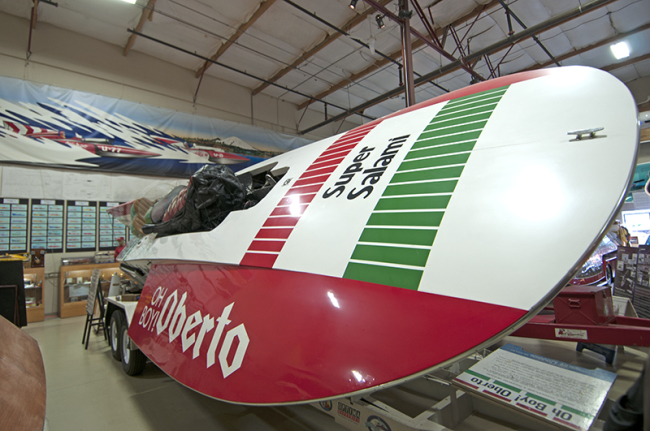
Oh boy Oberto hydroplane. One of the boats used in the Madison movie.
Not long after Ann and I met in 2011 we decided we wanted to visit the Hydroplane & Raceboat Museum in Kent, Washington (It’s only a few miles from mom and dad’s place). She’d grown up with hydroplane racing in the tri-cities and race weekend was a yearly event at my grandmother’s house, so we both had a sentimental attachment to them. And though we’ve traveled all over, we’ve never found the time to make it to the museum, until yesterday.
Joining us on this mini-adventure were my mother, my aunt Marilyn and uncle Phil. I knew they would enjoy the museum, because mom and Marilyn grew up near Seward Park and had a yearly view from their back porch of Lake Washington’s hydro races. They had fond memories of the yearly races as kids and young adults, telling me that at the time the races were as important to the city of Seattle as the Seahawks are today. It was a BIG deal!
The Hyrdroplane museum was launched in 1983 to honor the history of the race boats and is the only museum in the nation dedicated to powerboat racing. It started in a small location that I’m told wasn’t too glamorous. At some point the museum was able to move into it’s current facility, which doubles as a museum/research facility and restoration shop.
Sure enough, as soon as we got inside the museum, mom, Marilyn and Phil were rattling off names of boats I never knew: Such Crust, Short Circuit, Miss Tahoe, Tri-Tomic, Coral Reef, and others.
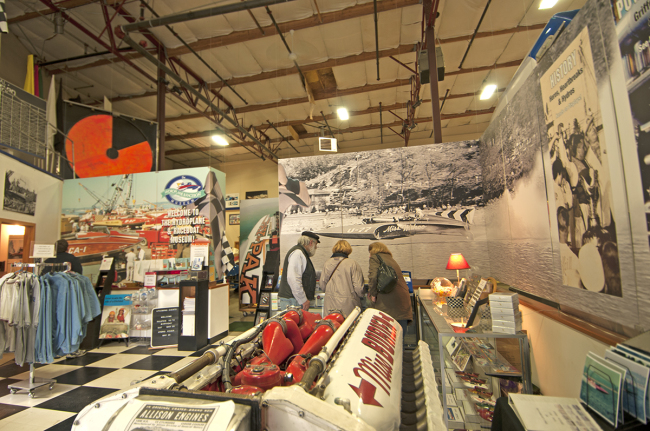
The museum’s lobby. At the bottom of the photo is an Allison motor. Originally costing $14k, it was sold as surplus equipment for $350. No wonder boat racers used the motor!
Volunteers at the museum offered to guide us around and tell stories. Mom, Marilyn and Phil offered plenty additional stories, so it was a rich experience for Ann and I. The museum had a number of hydroplanes familiar to me, including Atlas Van Lines, Oh Boy Oberto, Miss Budweiser, Slo-Mo-Shun-III, Miss Wahoo, and a few others.
There are also a large number of mini models called the pinhead collection that had been painstakingly made.
Swiss Inspection Jeep
Paul spotted this unique Inspection Willys Jeep Truck at Just a Car Guy’s blog. I would guess this was sold as a truck with no bed. What’s odd is the extra cab thing on the top. Looks like it was part of another vehicle.
http://justacarguy.blogspot.com/2015/03/swiss-rail-road-inspection-willys-jeep.html
1944 Photo of WWII Brazilian Troops in Jeeps on eBay
UPDATE: This is back on eBay.
“1944- Brazilian troops line up in jeeps at School of Motor Mechanization where students are given training courses beofre going on active duty.”
1945 Flattie Santee, CA **SOLD**
UPDATE: **SOLD** Was $5500
(03/22/2015) It’s only 2WD, but it looks good.
“1945 willy’s jeep on a 1973 CJ5 frame, new aluminum radiator, new alternator, new water pump. It has a 4.3L chevy with outside frame rail headers, Dana 44 rear and a dana 27 with disk brakes in the front. Currently 2WD, I have a T18 with a Dana 20 transfer case to make it 4wd. It’s been A project that I just don’t have the energy to finish.”
1942 GPW Santa Rosa, CA **SOLD**
UPDATE: **SOLD** Was $7900
It’s got a few mods, but appears solid.
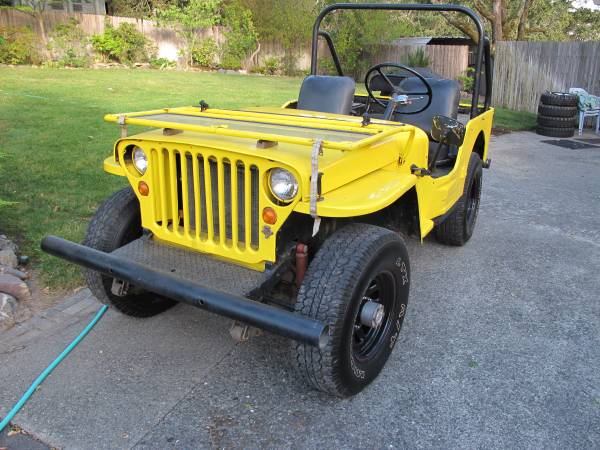
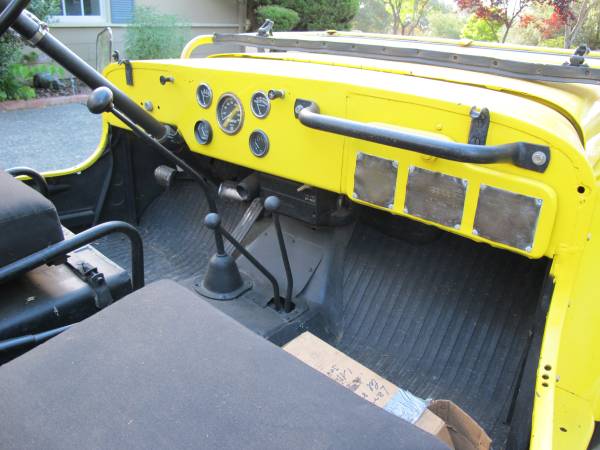
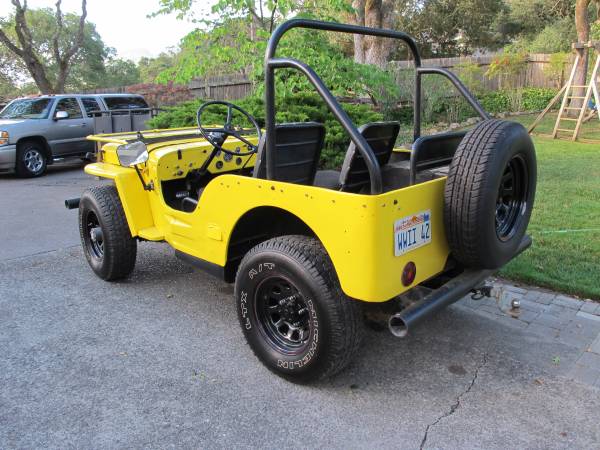 “1942 Ford GPW WW2 Jeep aka “Script”
“1942 Ford GPW WW2 Jeep aka “Script”
Asking $8,500
We don’t need to go into the history of Jeeps in order to enlighten you on how rare these models are. This is for the individual who knows what this is and is wanting to not have to spend over $20k to get a good one. Continue reading
CJ-2A Chassis Harrison, OH **SOLD**
UPDATE: **SOLD** Was $750.
“I have a old cj2a frame for sale. Comes with an engine and transmission. The engine has the right compression. I never had the chance to try and fire it. Engine has a new head gasket, and water pump.”
Rear PTO Barnesville, MN Make Offer
UPDATE: Still Available.
Somebody could use this. Chris has a governor for sale, too.
“Complete pto assembly off willys jeep
– shift unit that attaches to transfer case
– Complete with shifter and knob
– drive shaft
– rear gear box
– this unit has been painted and is in great shape”
1952 Wagon Beaverton, OR **Status Unknown**
UPDATE: Was $10,200. Status Unknown
(0310/2015) Lots of customizations.
“Frame off restoration. 1976 Jeep Cherokee Frame w/T18 Transmission. Ford 302 engine, Edlebrock carburetor, warn 9000# Winch, IDIDIT Steering Column, Headers, exhaust with flow master mufflers, LT 285 75R/16, Speed liner interior, roof and wheel flairs.”
Molds, Jeeps, Jeepers, and More Jeeps!
Sunday was a fun, but long day!
For me it started with a four hour drive from Pasco to Spanaway, where I met up with Rob Stafford and Al Schaper. Al and I planned to look over some fiberglass body molds that Rob had been storing for years. The molds were used to create fiberglass flat fender and CJ-5 body and front clip parts.
Of particular interest to me were the body molds. One of the body molds was used to create a Parkette racing body shell. The second body mold was used to create a Bobcat racing shell or in conjunction with a floor mold to create a complete body. While I have owned an Acme (I think) light racing fiberglass body and a Bobcat body (Biscuit’s body), I’ve always wanted a Parkette body. So, I was checking out that mold particularly closely.
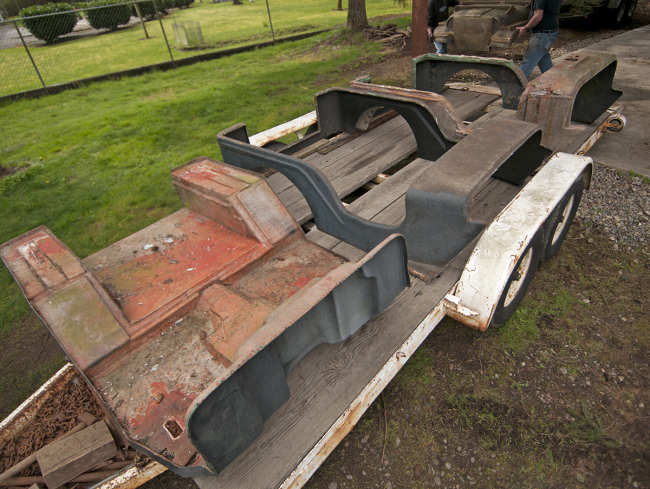
CJ-3B floor mold on the left, Parkette racing shell body in the middle, CJ-3B body mold on the right.
1957 FC-150 Roseburg, OR **SOLD**
UPDATE: **SOLD** Was on eBay.
Seller provides LOTS of information.
“Up for sale is a 1957 Jeep FC 150 (serial number: 6554810262)
History:
This Jeep lived the majority of its life on a farm and ranch in the Northern California region of the United States until an older gentlemen finally convinced the rancher to sell it to him after many years of trying. Unable to devote the needed energy and time to put this tough looking creature back on the road, he handed over the keys to his nephew. The young man began a cosmetic restoration of sorts and brought the FC back to a running condition to be used in various parades and car shows.
1956 CJ-6 Dolores, CO **SOLD**
UPDATE: Was on eBay. **SOLD** for $4000.
Sure looks like a solid, stock CJ-6.
View all the information on eBay
“956 jeep cj-6. Body in extremely great condition for the age of this little guy. There is no rust on the frame, body, or axles that I can find. In the pictures that is a tiny bit of mud underneath. The body is solid. The frame is solid.If you are looking for a good body this is it. The compartment under the seat is rust free and snaps down just as it should. The glove box is missing and it needs the little latch. I have a clear Colorado title. The tires are 90% and in great shape.
1946 & 1947 CJ-2As Tazewell, TN **SOLD**
UPDATE: Was $1950. **SOLD**
Might be a good deal.
“i am selling these jeeps for my dad. 1947 was last one to run. 1946 perhaps for parts. i believe these are to be cilivian models. Please contact me for more info.”
1985 J-54 Mitsubishi Topeka, KS **SOLD**
UPDATE: Was $8000. **SOLD**
“For sale is a 1985 Mitsubishi Jeep 4X4 with diesel engine.
This is a Mitsubishi clone of the CJ 3B Jeep; it has the two stick transfer case four speed transmission, lock out hubs, front and rear Power Take off, power brakes, radiator bug screen with chrome chaff guard,. heater and defroster, new tires, soft top with doors and a top for the summer time.
I have owned this for about 4 years it was imported into the USA by usdriveright./com and I bought it and had it delivered to me, this is 100% street legal, I have it insured through state farm.
It runs like a dream, it has glow plugs and starts every time.
The engine is used in Mitsubishi forklifts so it is industrial. (4DR5)
It is right hand drive like a mail jeep.
I do not know the actual miles because it is in kilometers and was imported from Japan but everything is very tight. This thing runs really good and does very economical for fuel, I have driven it around Topeka and get 35 to 37 MPG, It will go 60 mph but I do not like going that fast however 45 is very comfortable.
I took it to the cruse in car shows last year and it gets plenty of attention.
I have five of the original wheels, four are on the ground and one is in the garage, I have four aluminum wheels that will go with this, one of them is already mounted on the spare wheel.
This has a mount to attach your high lift jack.
1948 Truck Gilbert, AZ **SOLD**
1951 M-38 Florence, SC $9800
Mark listed this M-38 at warjeeps.com
“M38 Jeep in very good condition and drives great. Garage kept, no rust or fiberglass and no dents. Well maintained and title in hand.”
http://www.warjeeps.com/jss/sale/adj953/adj953.html
1948 CJ-2A? Lancaster, CA **SOLD**
UPDATE: **SOLD** Was $1800
The body is interesting. It looks to me to be a late 70s/80s(?) reproduction tub, perhaps one of the earlier attempts of MD Juan to make a MB/GPW body? The body has M-38, CJ, and MB elements. Probably not too many of these around.
“Jeep Willys 1948 4×4 Very Nice for a project. Originally I wanted to work with this,but I have no time to build it. See pictures front and back axle are intact. just to sell this parts by parts is already worth for the price. Price is $1,800.00 cash only you need to haul it. No title but I have deed of sale. Please no low ballers.”
1943 GPW Santa Cruz, CA $29,500
It’s supposed to be ‘near to historical specifications’, but is it near enough for the price?
“1943 military GPW jeep. This is a historical vehicle meticulously restored to near original specifications. Must see to appreciate.”
1945 MB Pasco, WA $6000
Not too original, but runs. Of course I’m in Seattle, so I can’t check it out in person (until Thursday).
“Pretty good shape. Runs good. Tranny rebuilt about 10 years ago. Original engine. Have a lot of extra parts that I’ve collected over last 15 years available.”
1946 CJ-2A Creswell, OR **SOLD**
UPDATE: **SOLD** Was $2000
Might be worth a look.
“This is a willy’s 1946 CJ2A. had it garaged most of the life of it, until the last two years. Decided to sell it before it get any worse off than it is now. It has only surface rust as of now. It has a 4 cylinder engine in it and that’s all I know, don’t know if it is original or who’s engine it is. I drove it around a few years ago and it started flowing gas onto the ground, never worked on it to get it going again. Brakes need work, they don’t work”
1944 MB? El Cajon, CA **SOLD**
UPDATE: **SOLD** Was $3000.
Should go quickly.
“1944 Jeep Willy AD Jeep. Runs/drives- new gas tank, new hood, new clutch assembly, new engine head gasket, has military tires, headlights, needs seats covered. 3000.00 obo”
1979 DJ-5 Woodlawn, TN **SOLD**
1952 CJ-3A Phoenix, AZ $12,000
It is civilian and not military.
“1952 Military Willys Jeep. Camo paint and in excellent condition.”



